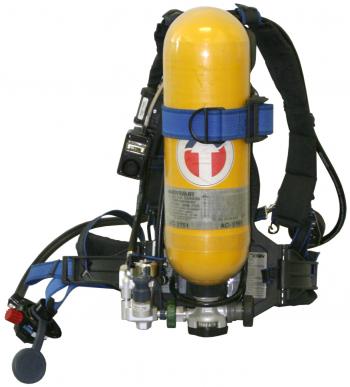Firefighter turnouts are made up of various components, each of which is vital to the firefighter's safety. The complete turnouts can weigh in excess of 50 pounds. The self-contained breathing apparatus (SCBA) alone weighs more than 25 pounds. Turnouts are seven to 10 pounds heavier when wet than when dry.
The firefighter's equipment includes the following key components.
Turnouts
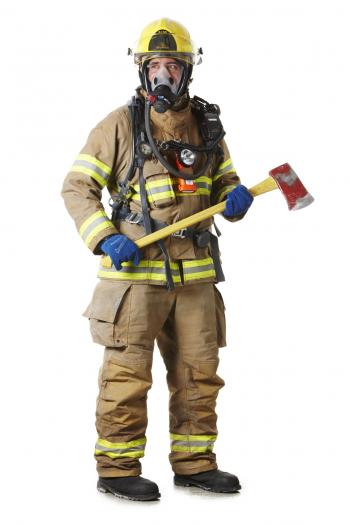
The firefighter's uniform has three layers. The outer layer is made of kevlar and protects the firefighter against water, while the inner layer protects against humidity. The innermost quilted layer protects the firefighter against heat.
Source: Service de sécurité incendie de Montréal
Boots
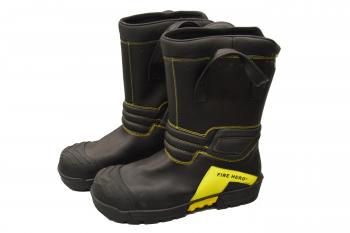
Firefighter's boots have a protective hull for their toes and a steel plate in the sole to protect the firefighter from perforations. The inside of the boot has a protective layer similar to the one in the uniform to protect against humidity. The outer sole is made of rubber and is anti-skid.
Source: Service de sécurité incendie de Montréal
Helmet
The outer shell of the helmet is made of thermoplastic. There is a second shell inside the helmet, in direct contact with the head. This second shell is made of urethane and the head straps are made of aramid nylon. Firefighters on the scene of an emergency intervention may be seen wearing helmets with different colours, each of which has a special significance indicating the duties performed by the person wearing it.
Yellow helmet
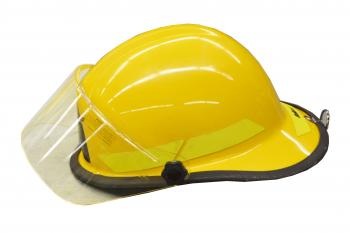
The yellow helmet is worn by firefighters. The yellow helmet with a red triangle means that the firefighter is eligible for the rank of lieutenant.
Source: Service de sécurité incendie de Montréal
Red helmet
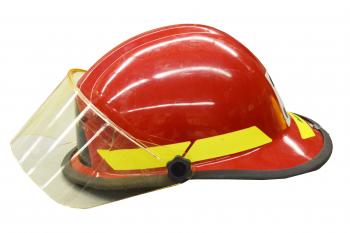
The red helmet is worn by operations officers (ranks of lieutenant and captain).
Source: Service de sécurité incendie de Montréal
White helmet
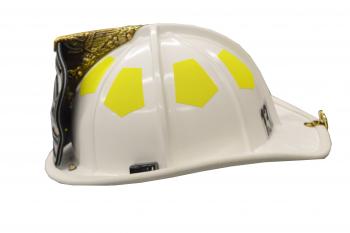
White helmets are worn by operations chiefs, division chiefs, assistant directors, associate directors and the director of the department.
Source: Service de sécurité incendie de Montréal
Blue helmet
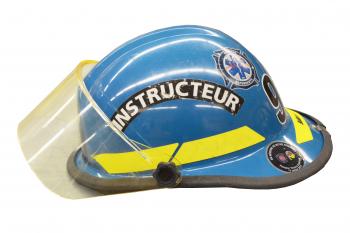
The blue helmet is worn by driver instructors, who coordinate vehicle maneuvers during operations. Their role consists of positioning vehicles in the right places and ensuring proper water supply to ladder vehicles.
Source: Service de sécurité incendie de Montréal
Orange helmet
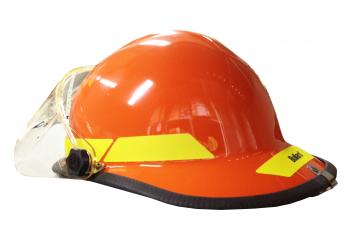
Orange helmet worn by firefighter-investigators who investigate the causes and circumstances of fires.
Source: Service de sécurité incendie de Montréal
SCBA
The self-contained breathing apparatus (SCBA) is an essential piece of equipment. Before the start of every work shift, firefighters check the face shield, the overall condition of the SCBA and the alarm levels.
En route to a firefighting intervention, firefighters don their breathing apparatus inside the vehicle. Once on the scene, they make sure the straps are properly adjusted and lower the face shield. Only when an intervention is necessary will a firefighter lower the face shield and turn on the air supply.
The face shield is airtight and may be adjusted using the straps. The breathing apparatus includes a pressurized filtered air cylinder. The pressure inside the tank is equal to 4,500 psi, enough to supply air for about 25 to 30 minutes, depending on the individual. The device is also equipped with a pressure gauge, audio and visual alarms, as well as an extreme heat alarm and inertial sensors in the event that the firefighter is in a critical situation.
The breathing apparatus weighs 26 pounds and is worn at all times in danger zones, often for more than one hour. Firefighters replenish their air supply in a secure area and return to the scene of the intervention as required. The entire breathing apparatus is subjected to a thorough inspection on a yearly basis. A hydrostatic test is carried out on the cylinder every five years, and cylinders have a 15-year service life.
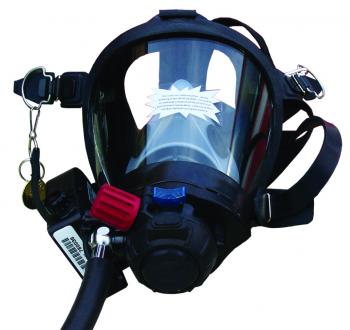
The facial part of the self-contained breathing apparatus.
Source: Service de sécurité incendie de Montréal




